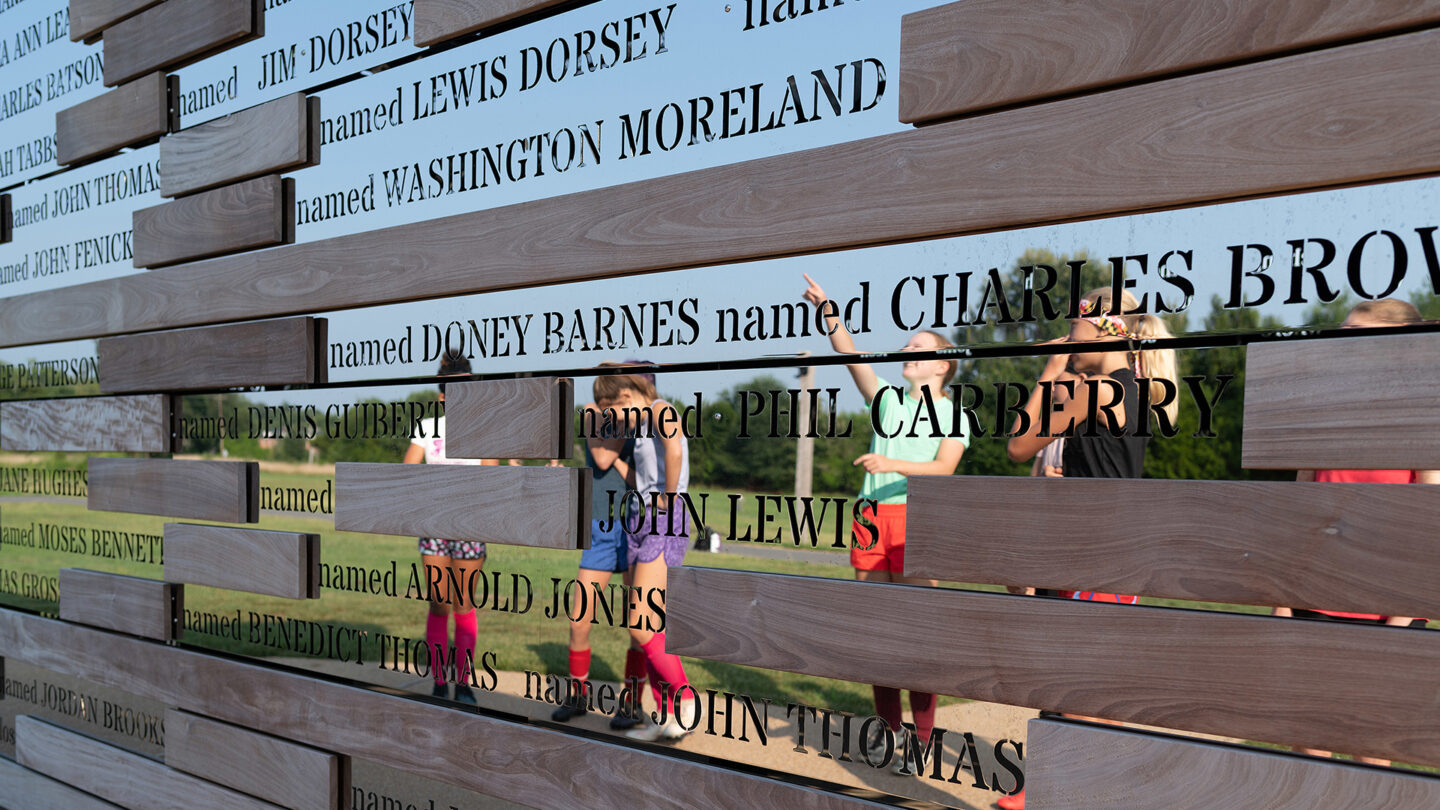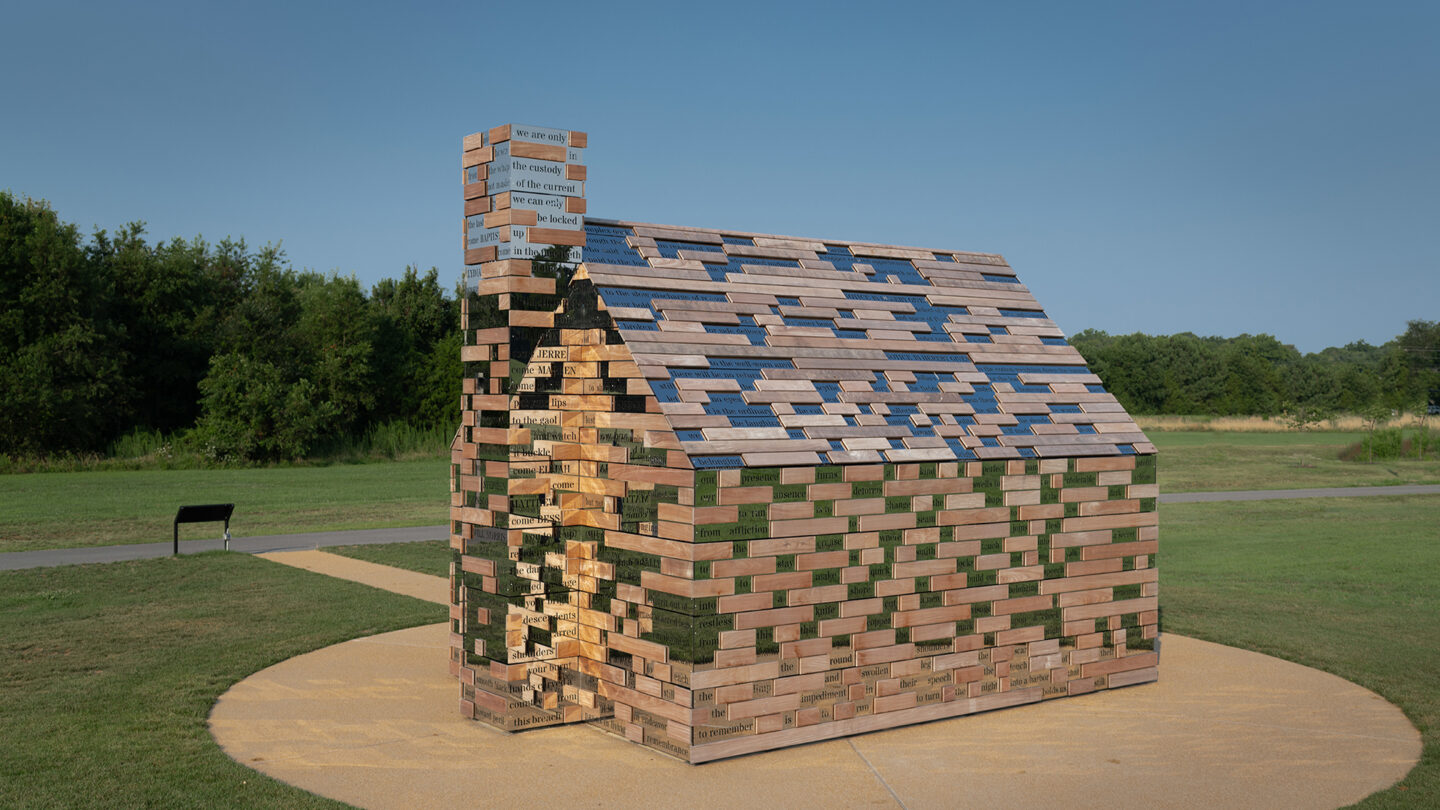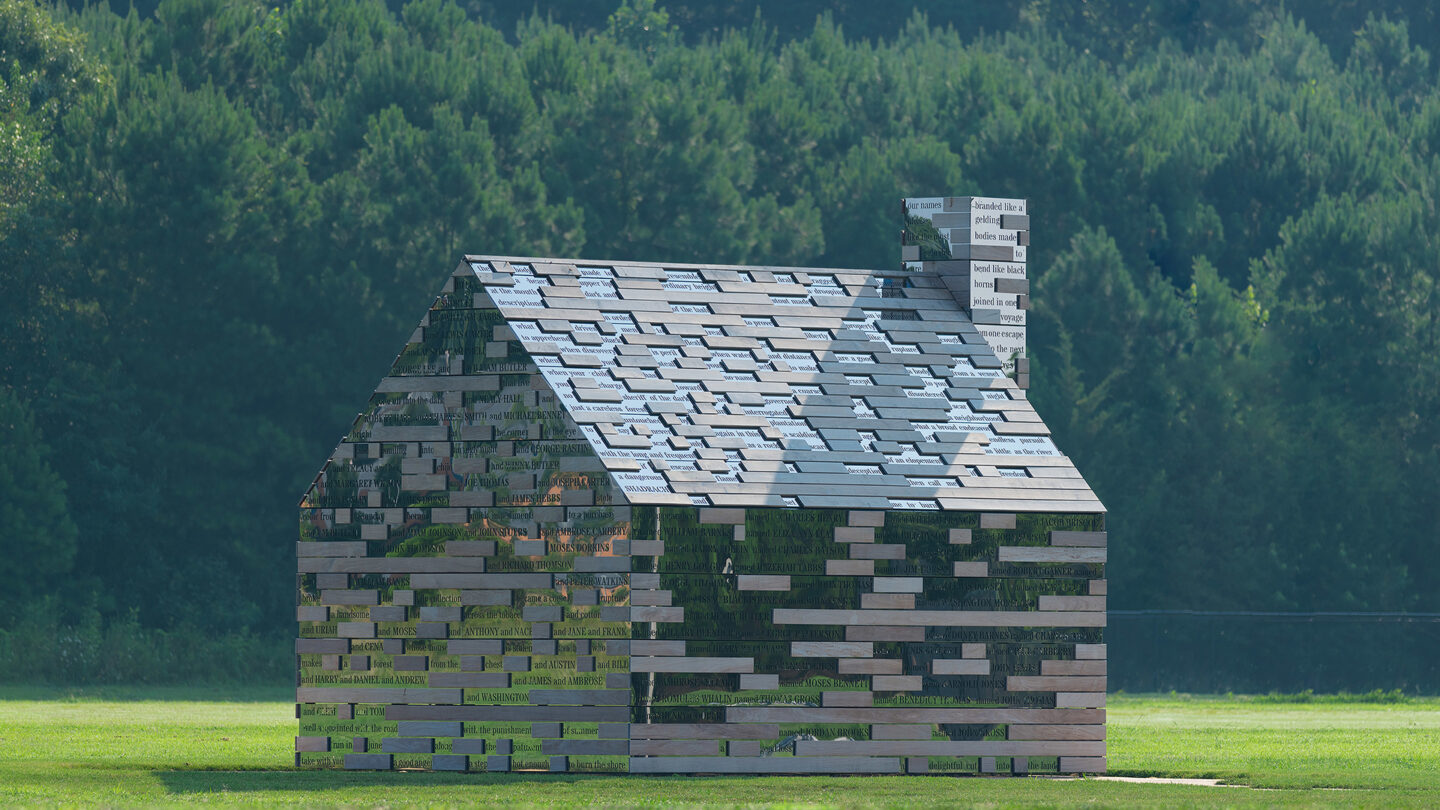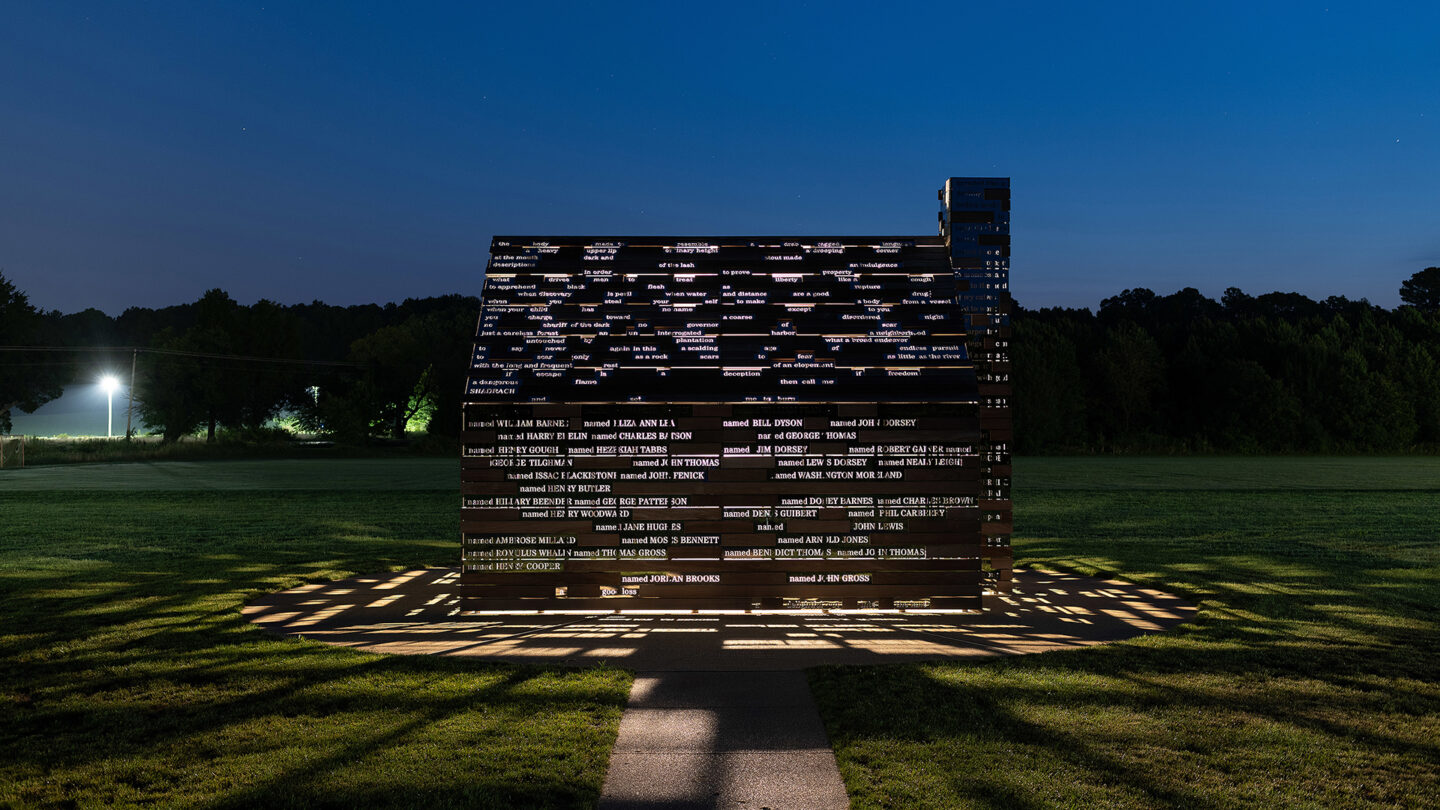From Absence To Presence, Commemorative To Enslaved Peoples Of Southern Maryland
In “From Absence to Presence,” the tectonic form of a slave quarter materializes from the ground up evoking how this history was uncovered from archaeological research – making the invisible visible.
Agency
RE:site
Practice Area
Client
St. Mary’s College of Maryland
Industry

The Challenge
The biggest challenge was finding historical documents related to the Mackall Broom and other nearby plantations that could be used to create powerful redacted or erasure poetry in the context of the design. The team’s collaborator, poet Quenton Baker, researched various types of documents related to the plantation site and eventually discovered hundreds of runaway slave ads that became the foundation of his poetry. The team was struck by how the ads were so personally descriptive of the runaway slaves, but at the same time profoundly impersonal, as the words were coming from a context of describing property. This dichotomy was particularly resonant for us as artists because it distilled the essential inhumanity of chattel slavery in our nation’s history.
Project Vision
The team’s approach was to make the Commemorative as site-specific as possible. This included drawing inspiration from the archaeological research and artifacts discovered by the College, the architecture of Historic St. Mary’s City, historical documents related to the plantation, as well as the formal aspects of the site itself. Also, we wanted the Commemorative to directly engage the rhythm of daily campus life as opposed to secluded or isolated from it.

Making the invisible visible, a slave quarter materializes. The surfaces alternate between tropical hardwood and mirror polished stainless-steel waterjet cut with text, recalling the staggered configuration of erasure poetry.
Kevin M. Kennedy

Making the invisible visible, a slave quarter materializes. The surfaces alternate between tropical hardwood and mirror polished stainless-steel waterjet cut with text, recalling the staggered configuration of erasure poetry.
Kevin M. Kennedy

Making the invisible visible, a slave quarter materializes. The surfaces alternate between tropical hardwood and mirror polished stainless-steel waterjet cut with text, recalling the staggered configuration of erasure poetry.
Kevin M. Kennedy
Design + Execution
Most memorials that focus on slavery across the country tend to deal with the subject broadly in in sculptural terms. Whether they are about the entire transatlantic slave trade or specific events in history, most of these memorials use a figurative approach that are interpreting themes in universal terms. The Commemorative consists of a steel framework that sits on a concrete foundation and is clad with exterior-grade stainless steel panels and hardwood. The steel panels are waterjet cut with poetry text. These sheets form the planes of the sculpture and are mounted directly to the steel framework. The erasure effect of the text is achieved by pieces of hardwood mounted to the steel framework. The bands of hardwood selectively obscure the text while evoking the wood clapboards of the site’s original slave quarters. At night, a point light in the interior of the sculpture illuminates the text from within, projecting the text into the surrounding environment through the cut steel panels.

At night, the words of poetry become dramatically illuminated, projecting the text upon the ground becoming an eternal vigil to the memory and resilience of those once enslaved.
Kevin M. Kennedy

At night, the words of poetry become dramatically illuminated, projecting the text upon the ground becoming an eternal vigil to the memory and resilience of those once enslaved.
Kevin M. Kennedy

At night, the words of poetry become dramatically illuminated, projecting the text upon the ground becoming an eternal vigil to the memory and resilience of those once enslaved.
Kevin M. Kennedy
Project Details
This project is stunning in the most delicate and refined of ways. It is refreshing to see a memorial of names reflected in the shape of a home. The shape and scale allow visitors of all ages a more intimate connection to the lives of enslaved peoples. The house is a beacon of light during the day and the night, with its reflective surface catching sunlight and light shining within the night. A beautiful commemorative creation!
This project creates a confrontation with our past very specific to one site and institution. Each aspect of the design, from the human scale of a living quarter, to the erasure poetry, to the inner illumination at night is incredibly strong. I am in awe and will think about this work for a long time.
This important work invites the viewer to reflect on our country's painful past. The work acts as a light beacon at night as the words are illuminated and reflected on the ground plane. This was one of the most meaningful projects submitted.
Design Team
Shane Allbritton
Norman Lee
Collaborators
Quenton Baker (poet)
METALAB (design optimization/management)
Merge Studios (fabrication/installation)
Photo Credits
RE:site (photography)
Kevin M. Kennedy (videography)
Open Date
November 2020



